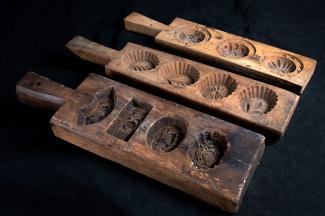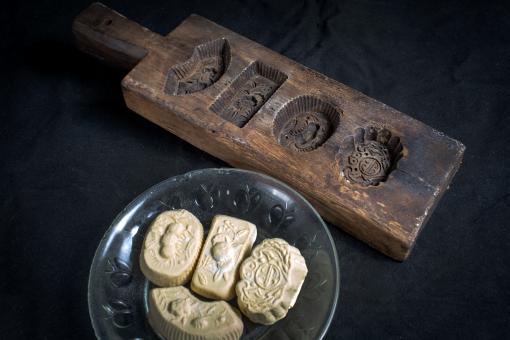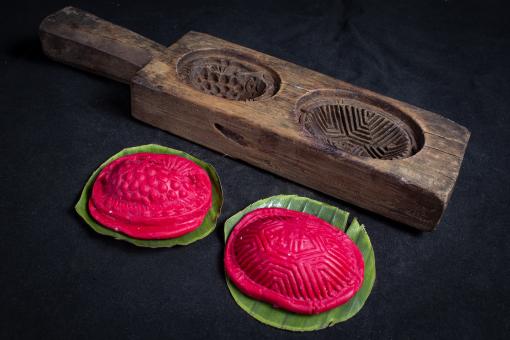In the 16th century, Lasem, located on the northeast coast of Java, was one of the important and dynamic cities of the Majapahit empire (1293-1527 CE). Lasem or Lao Sam was home to Chinese immigrants from the 14th to 15th centuries onwards. This led to a strong acculturation of Chinese and local Javanese culture (Peranakan culture), especially in tradition, food, and architecture.
These cake moulds were used to make Kue ku atau Âng-ku-kóe (紅龜粿) or Âng-ku-kóe (紅龜粿), a traditional red cake, shaped like a turtle shell, symbolising longevity. The cake is made from glutinous rice flour with green bean filling and served on a sheet of banana leaves. This cake is usually served during Chinese New Year and other celebrations, like circumcision ceremonies and feasts in Indonesia.
Intercultural connections
This collection dates from the 1920s-1930s and belonged to Gho Nie Tjie Nio, who was of Peranakan Chinese descent in Lasem. He collected the moulds from local craftsmen. The cake moulds consist of many shapes, such as flowers and animals, each with symbolic meaning. The cake moulds were passed down from generation to generation in the family until 2016 and are now kept in the Roemah Oei Museum.
The collection has high significance to the history of Lasem and the Oei family, and represents the multiculturalism of Lasem and Indonesia more widely. The cake is still popular and enjoyed by people from different backgrounds. The significance of this collection lies in the cake as a traditional symbol in celebrations, art, and the role of Chinese Peranakan women in the household, and the cake industry in Indonesia.
Scholastica Rania from the Oei Museum in Lasem shares the significance of the cake mould collection.



